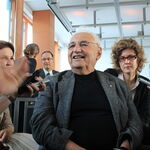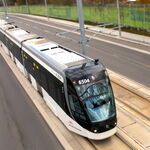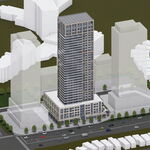W
wyliepoon
Guest

The Star
Link to article
Montreal's Olympic Stadium paid off, 30 years later
December 19, 2006
Canadian Press
MONTREAL – The Olympic-sized bill for the Big O is finally history some 30 years after the stadium was built as the main venue for the 1976 Summer Games.
The final price tag for Montreal's Olympic Stadium and the structures in the adjoining Olympic park was $1.47 billion, Gilles Lepine, who runs the facility, said Tuesday. The last payment was delivered in November.
"Maybe it was too much, but that was in the past and you have to look forward," said Lepine, president of the Olympic Installations Board, the provincial government agency that manages the stadium known as The Big O.
"We have a facility here and we have to make it as useful and profitable as possible."
He said the final tally includes the cost several years back of converting the Olympic velodrome into the Biodome, a tourist attraction.
Now, the stadium needs a new roof, although a price tag has not yet been set for that. An engineering firm is to submit plans in the coming months, Lepine said.
The stadium is closed four months per year in winter because fire marshals fear it may not withstand the weight of snow.
It is one more indignity for the domed stadium in the city's east end.
It's main tenant after the Olympics, baseball's Montreal Expos, moved to Washington, D.C. after the 2004 season, while the CFL's Montreal Alouettes moved out in 1999 for the outdoor Percival Molson Stadium downtown.
However, the Alouettes still play twice a year at Olympic Stadium to take advantage of its 50,000-plus seating capacity – the largest by far of any stadium in Quebec. The Als also still use office space and training facilities at the Big O.
Lately, it has been used mostly for trade shows, concerts and special events like dog shows and motocross competitions. Lepine said it was in use 200 days in the past year.
And Lepine takes exception to the oft-made suggestion to tear the stadium down to save further spending on a facility that seemed doomed from the beginning.
"Where else in the province can you put 50,000 people together?" he said. "It's the biggest venue in the province and that helps everyone."
He also said it was a key tourist site, particularly the observation tower that looms over the east side of the building.
It also has excellent indoor pools for competitive swimming and diving, which are home to Canada's synchronized swimming team.
But most of the attention has gone to the stadium's problems and cost overruns.
Designed by French architect Roger Taillebert, it was not completed on time for the 1976 Games and the complex retractable roof, which took years to complete, never quite worked as planned.
In 1991, a concrete beam fell off the side of the stadium. Luckily, it didn't hit anyone but caused the Expos to play only road games for a month while the building was inspected and reinforced.
The first permanent roof partly collapsed, forcing yet another to be installed.
Much of the stadium was paid off with a special tax on cigarettes in Quebec.
"You can say it was Quebec smokers who paid for that, but we can say that this is good for the health of all Quebecers," added Lepine.





